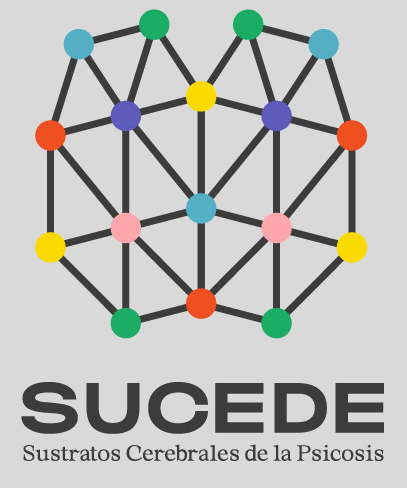AUDITORY EVOKED POTENTIALS, CONSEQUENT DISCHARGE AND ANOMALOUS EXPERIENCES OF THE SELF.
Communication between two neural groups depends on the coherence or synchrony of neural activity between them (Fries, 2005). Ford et al. (2002) found that during speech generation, in healthy people, there was greater coherence between frontal and temporal regions in all frequency bands compared to passive listening to speech, these results not being observed in people with schizophrenia. Chen et al., (2011) studied synchrony in the gamma band during vocalization, finding greater phase synchrony and this being correlated with subsequent N1 suppression, suggesting an involvement of this mechanism in the transmission of the corollary discharge.
Regarding topography, Hubl et al. (2014) studied the map of N1 in different experimental conditions, reflecting the effects of self agency and belonging. “Talk” condition in our study evaluates the agency effect, as this has place when a subject’s action is followed by an effect. On the other hand, the “Listen self” condition would be related to the belonging effect, by recognizing the characteristics of the effect independently of the action performed by the subject. The topographic map of N1 (86-172 ms) showed little common variance between both effects, from which we can deduce that they would be independent processes, showing the effects subsequent (174-400 ms) to N1 similar topographies, and concluding that in this case common mechanisms would be involved (Hubl et al., 2014).
On the other hand, we have performed correlation and regression analyses of scores on anomalous self experiences, obtained using the IPASE (Inventory of Psychotic-Like Anomalous Self-Experiences) scale, and positive and negative symptoms, obtained using the PANSS (Positive and Negative Syndrome Scale) and BNSS (Brief Negative Symptom Scale) clinical scales. We found significant correlations between the positive and negative symptoms of the PANNS and the total score obtained in IPASE, as well as with all the scales except somatization. Regarding the BNSS, we found correlations of the scale assessing abulia with the IPASE total score and the self-consciousness and conscientiousness scales. Regarding regression, the IPASE cognition, somatization and awareness scales would explain 40% of the variance of the positive symptoms and 27% of the negative symptoms assessed with the PANSS scale.
Finally, we continued with the recruitment of healthy participants and people with a psychosis spectrum disorder to increase the sample in our paradigm of study of the consequent discharge and the anomalous experiences of the self, mainly taking into account the variables sex, age and years of study with the aim of equating the control group and the experimental group.



